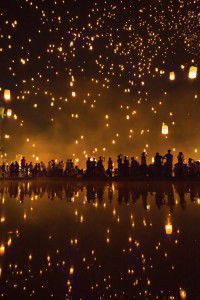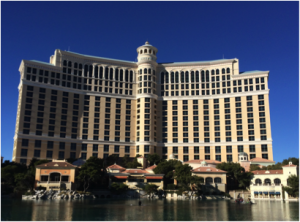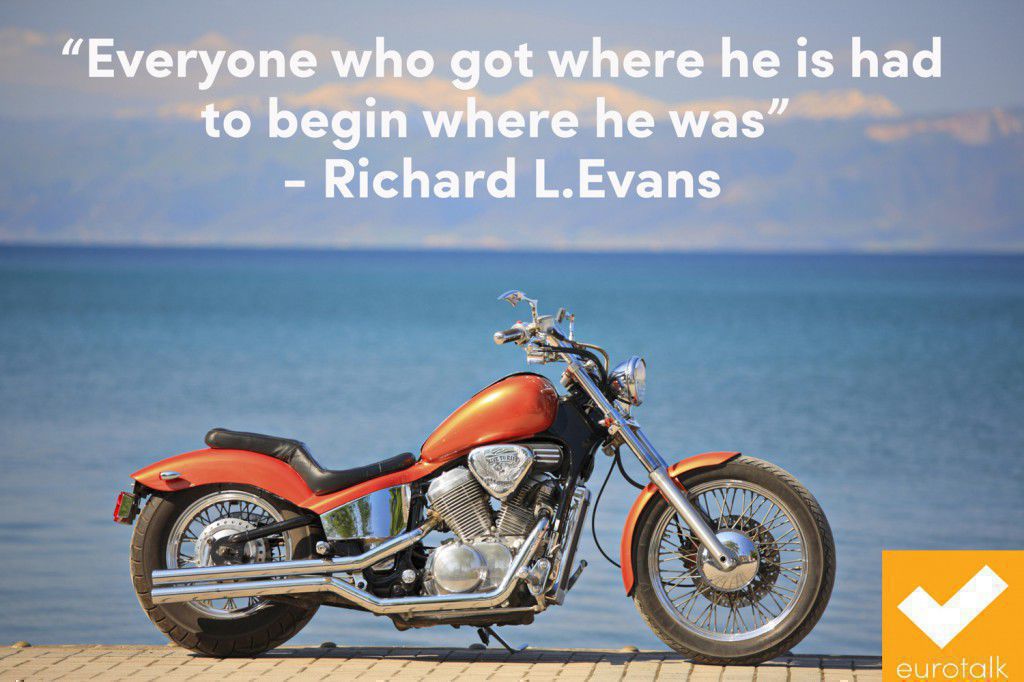10 reasons to visit… Las Vegas
I was lucky enough to visit one of the most notorious party cities last December; I, however, can not comment on what the night life is like in Vegas as I was only 19 and therefore not allowed to step foot into a bar or club! However, even without the partying there is so much to do in Vegas, as well as lots of places to see. We flew out on the afternoon of Friday 13th, on a plane which contained a lot of nervy people as well as plenty of bachelor and bachelorette parties. We were only there for four days and it was non-stop. Here are my top ten reasons to visit Las Vegas.
1. The Shows
Walking down the strip you can see endless advertising for different shows, concerts and celebrity residences. They all seem that much better over in Vegas; maybe this is because of the additional glitz and flashing lights, or just getting caught up in the buzz of the city. I would highly recommend going to see at least one type of show, as it is a completely different energy and atmosphere.
2. The People
Everyone in Vegas was so friendly. People couldn’t do enough for you, they were always trying to make your experience the best it could be. This didn’t just include staff working in the hotel but everyone on the strip; if people saw you were a group and one was taking a photo of everyone else, someone would always offer to take a group photo of you. People were all so chatty and friendly and even when you were approached by a salesman on the street once you said no they didn’t pester you, they still smiled and said ‘Have a great day’, how often does that happen here in the UK?
3. The Buildings
When watching the films, you expect the strip to go on for miles and miles. However, when you are there it isn’t nearly as long as you expect. Also all of the different styles of buildings you see, ranging from the classic Bellagio to the new styles such as the Wynn. You also have character buildings such as the New York, New York and the Luxor; just viewing them from the outside there is always something different to see.
4. Entertainment
When you are walking along the strip there is always someone or something to see. Ranging from the famous fountains at the Bellagio, to a volcano exploding in front of the Mirage and the pirate show in front of Treasure Islands, which was unfortunately under construction when we were there. There were many different types of people in fancy dress, ranging from Alan in The Hangover to Bumblebee from Transformers, who can actually turn himself from a car to a person! It is simply not possible to walk down the strip and be bored.
5. Casinos
Every hotel has a casino and each one is slightly different. When sitting at a slot machine or one of the numerous machines they have spread throughout the floor, you can really lose track of time. There are no windows and you see people sitting at the tables for hours on end. Often in the morning when you walk through the casino you see people still playing who haven’t left from the night before. Long gone are the days of inserting ‘quarters’ into the machine and pulling the handle; it is now dollar bills and pressing a button. It was rare to find a machine with a handle and it was so exciting when you did find one. Once you are there you can see how people do become addicted; just waiting for the sheet of paper to come out of the machine to tell you how much you have won, and then queuing in anticipation to collect your money. You quickly get into the ‘oh, just one more time’ mind set…
6. Lobbies of Hotels
Each hotel lobby holds something different to entice you in further towards the casinos, restaurants and shops. You want to walk into each hotel and see what they have on show. Most of the hotels were truly spectacular, especially in December where lots had a Christmas theme.
7. Grand Canyon
Undoubtedly one of the most beautiful sights you will ever see. Even if you aren’t there for long, there are various trips you can pick from, ranging from a short helicopter ride over the canyon, to an all-day adventure including having lunch in the canyon. It is a sight you will never forget and you will never see such a vast range of colours anywhere else.
8. The Shopping
An experience I have never had before. In Caesar’s Palace, walking from shop to shop, even though you are inside, you would never know. The ceiling is done in such a way that it feels like you are outside, and even simulates rain and thunderstorms. Or there is the Venetian, with the canal running throughout the ground floor where you can catch a gondola and be serenaded by a gondolier. You won’t experience shopping like this anywhere else in the world.
9. The Chocolate Fountain in the Bellagio
Something you can stand and stare at for hours wondering how it was possible to make – at first it is very hard to tell that it is even real. It is the world’s largest chocolate fountain and took a year and a half in planning and designing alone. For all of the chocolate lovers out there, it is a sight not to be missed.
10. The Food
Every different type of food you could possibly want, you can find in Vegas. The portions are huge, so sharing is definitely recommended if you aren’t overly hungry. At breakfast, when you order pancakes you don’t just get one or three, you get a stack of at least five. Vegas is also renowned for its buffets, where you pay a fixed price and you can go up as many times as you want. These aren’t just any buffets though, they have everything you could possibly want: Chinese, Italian, Seafood… anything and everything.
Even without the partying aspect of Vegas it is still the best city I have ever been to; the list of reasons to go could go on for a very long time.
Have you been to Vegas? What were your best bits?
Amy
Quote of the week: 8 Nov 2014
“Everyone who got where he is had to begin where he was.” Richard L. Evans
Embed This Image On Your Site (copy code below):
Just how bad was Mark Zuckerberg’s Mandarin anyway?
A couple of weeks ago, Mark Zuckerberg shocked the world by taking part in a 30-minute Q&A session in Mandarin Chinese. And we were all super impressed.
It was obvious, even to a non-Mandarin speaker, that he wasn’t completely fluent, but he managed to keep going for almost the full half hour, and his audience at Tsinghua University in Beijing seemed to enjoy his jokes, and his efforts at speaking their language. And it all sounded pretty good to me.
Which just goes to show how much I know. Not too long after the video appeared online, Isaac Stone Fish, Asia Editor at Foreign Policy Magazine, gave his assessment of the Facebook CEO’s efforts: ‘in a word, terrible’. The headline of the piece was, ‘Mark Zuckerberg speaks Mandarin like a seven-year-old’. Ouch.
Since the article was published, people have been jumping into the debate left, right and centre with their own opinions on how he did. James Fallows, writing for The Atlantic, said that Zuckerberg spoke Mandarin ‘as if he had never heard of the all-important Chinese concept of tones’, whereas Mark Rowswell, a Canadian comic who’s fluent in Mandarin and famous throughout China, took to Twitter with a more balanced view.
To clarify, Mark Zuckerberg's Chinese isn't very good. He's incredibly fluent for a Fortune 500 CEO. Which angle do you choose to take?
— 大山 Dashan (@akaDashan) November 1, 2014
Meanwhile, Kevin Slaten, program coordinator at China Labor Watch, was more concerned about the message being given out by Stone Fish’s article. Mark Zuckerberg, after all, is used to bad press and is hardly likely to be put off by a few negative comments. But Slaten looks at the bigger picture: ‘What is Stone Fish, a “China expert”, telling these students of Chinese when he is tearing down a notable person for speaking non-standard Mandarin? He’s telling them, “you’ll be laughed at”’.
Personally, I don’t know how good Zuckerberg’s Mandarin was. It sounded good to me, and as someone who really struggles with nerves when speaking another language, especially to native speakers, I’m pretty much in awe that he had the confidence to give it a go, particularly since it was a Q&A session, not a prepared presentation. (Not that I think Mark Zuckerberg is particularly short on confidence, but you know what I mean.) Had the audience sat there shaking their heads, looking confused or angry, things might be different, but they clearly appreciated the effort he’d put in, so who am I to judge?
Making mistakes is part of learning a language. Everyone has a funny or embarrassing story about a time they used the wrong word, or – in the case of languages like Mandarin or Thai – got the tone slightly incorrect and ended up saying something completely different than what they intended. There’s no shame in it, and in my experience, people appreciate the effort made. Mark Zuckerberg didn’t have to do that interview in Mandarin. He could have done what was expected of him and spoken English. And maybe he messed it up, but I bet everyone in that audience went home with a smile on their face (even if it was more from amusement than anything else).
Isaac Stone Fish has since responded to the criticism of his criticism, stating that his issue was with the media outlets who described Zuckerberg’s Mandarin as fluent, when it wasn’t. Which is fair enough, and maybe some of his comments were taken out of context, but I think the main point stands.
There’s a quote by Abraham Lincoln: ‘Better to remain silent and be thought a fool than to speak out and remove all doubt.’ I don’t agree, at least not in the context of language learning. I say speak out, remove all doubt, have a laugh about it, and then learn from the experience. Otherwise, how will you ever get any better?
So let’s give Mark Zuckerberg – and every other language learner on the planet – a break.
What did you make of the Facebook boss’s Mandarin? Have you ever surprised people by speaking their language?
Liz
Language of the week: Thai
This week on the 5th, 6th and 7th November, it’s the Yi Peng and Loy Krathong festival in Thailand, otherwise known as the Lantern Festival. After seeing some pictures and watching some videos, it looks like one of the most breath-taking festivals I have seen.
Yi Peng and Loy Krathong
Both of the festivals are a spiritual, ancient and sacred affair that invite new beginnings via spiritual cleaning. Yi Peng is where thousands of people gather to release Khom Li (Lit lanterns) into the night sky and make a wish, as well as paying homage to the Buddha. The sky is completely transformed into a wonderful and mesmerising spectacle. 
The Loy Krathong festival is believed to be an ancient Brahmanic or Indic festival. Originally it was a ceremony where people paid their respects to three different gods known as Phra I-Suan (Shiva), Phra Narai (Vishnu) and Pra Phrom (Brahma). However, one hundred and fifty years ago it was adopted by Buddhists as a ceremony to honour the Buddha. Today people create small floating vessels made from banana stalks and decorated with incense, offerings, flowers and candles. They are then floated down the river and are meant to symbolise the drifting away of bad luck and misfortune. Many Thai people also see it as an opportunity to honour the goddess of water.
Thai
Did you know that over 60 million people speak Thai? Outside of Thailand, the largest concentration of Thai speakers is in Los Angeles where there are approximately 80,000 immigrants.
In terms of learning Thai, it is very important to get the tones correct. Within the language there are five tones:
Mid tones
Low tones
High tones
Falling tones
Rising tones
It is very important to distinguish these tones, as getting them wrong may lead you to say something completely different to what you had intended. For instance:
ไมล์ [mai] – mile
ใหม่ [mài] – new
ไม้ [mái] – wood
ไม่ [mâi] – not
ไหม [mǎi] – silk
They all look like they should be spoken in the same way; however, it is the tone that differentiates the word.
This week we want to hear if any of you have been to Thailand and your adventures you had had whilst over there. Or maybe you’re learning Thai, and have some tips for our readers? Let us know in the comments!
Amy
Halloween around the world
Halloween is one of the world’s oldest celebrations, dating back to possibly 500 AD in Ireland. The celebration was originally the ‘Celtic feast of Samhain’, a pre-Christian festival that began at sunset on 31st October and ended at sunset on 1st November. It was meant to be the night when the veil between this world and the other was at its thinnest, and the dead were very near.
 Today Halloween is celebrated in a number of countries across the world. In Mexico and other Latin America countries, Día de los Muertos (the Day of the Dead) honours deceased loved ones and ancestors. The festival runs from midnight on 31st October until 2nd November. Traditionally 1st November is the day for honouring children that have passed, whereas 2nd November is the day for honouring the adult spirits. Families traditionally construct an altar for the dead and decorate it in sweets, flowers, photographs and the deceased’s favourite food and drink. Often a washbasin is left outside with a towel so the spirit can wash before indulging in the feast. Many people around the world, even if they are not directly connected to Mexican culture, are drawn to the concept and imagery of Mexico’s Day of the Dead, so it is continually growing in popularity.
Today Halloween is celebrated in a number of countries across the world. In Mexico and other Latin America countries, Día de los Muertos (the Day of the Dead) honours deceased loved ones and ancestors. The festival runs from midnight on 31st October until 2nd November. Traditionally 1st November is the day for honouring children that have passed, whereas 2nd November is the day for honouring the adult spirits. Families traditionally construct an altar for the dead and decorate it in sweets, flowers, photographs and the deceased’s favourite food and drink. Often a washbasin is left outside with a towel so the spirit can wash before indulging in the feast. Many people around the world, even if they are not directly connected to Mexican culture, are drawn to the concept and imagery of Mexico’s Day of the Dead, so it is continually growing in popularity.
Halloween in the Philippines is called Pangangaluluwà, which is sadly a tradition that is dying out. They have a slightly different version of trick or treating, where children go from door to door and offer a song in exchange for food or money. However, it’s not just any food they are offered; it is a kind of Filipino version of a soul cake, as they believe that every cake eaten is a soul set free in purgatory. The carollers would also be allowed to steal sundry items from the houses that they visit, such as clothes from a clothesline, eggs, vegetable and fruit. The homeowners would explain the thefts by saying it was the ‘spirits returning to the world of the living’.
It wasn’t until the 19th Century that Halloween reached America, and they do things slightly differently to us Brits. ‘Across the Pond’, Halloween marks the beginning of ‘fall’ (autumn). For families it is a time to prepare and create costumes together, compared to Brits, who normally buy pre-made outfits. In the U.S., they also have a slight twist on what to do with the ‘pumpkin guts’ after carving their jack o’lanterns; instead of throwing them away, they roast the remains with salt and cinnamon (I have to say I am very tempted to try this). When it comes to decorating their houses they also take it one step further than our pumpkin outside of your door. (I wish this were the case over here).
Here at EuroTalk we are all dressed up for the big day, from the scary (Frankenstein, skeletons and a bat) to the not so scary (Minnie Mouse, Where’s Wally – or Waldo to our American friends – and a giant baby). And of course, there’s cake. (That’s not necessarily traditional for Halloween in the UK – we just love cake.)
Happy Halloween!
Amy










